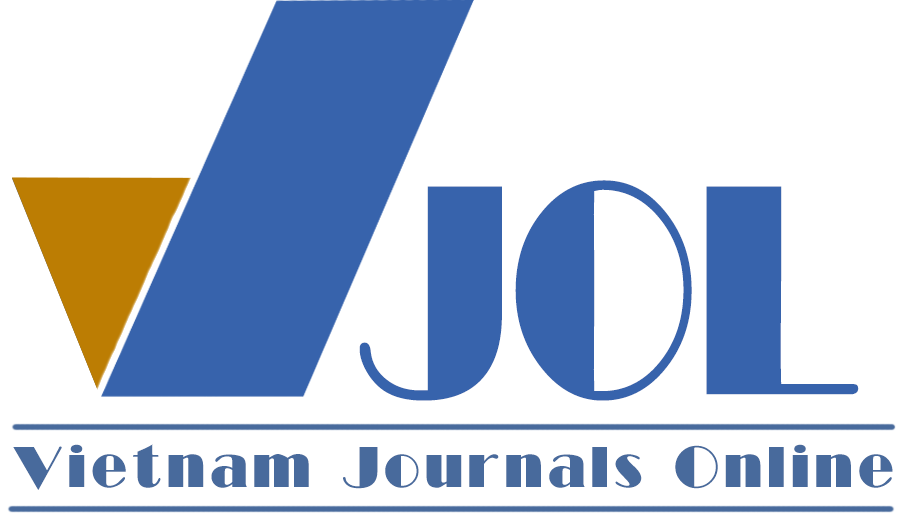Post-pandemic tourist behavior in the context of the industrial revolution 4.0: An empirical study in Vietnam
Authors
DOI: https://doi.org/10.57110/vnujeb.v3i4.179Keywords:
Travel intention, satisfaction, Industrial Revolution 4.0, post-pandemic, social mediaReferences
Balcilar, M., Aghazadeh, S., & Ike, G. N. (2021). Modelling the employment, income and price elasticities of outbound tourism demand in OECD countries. Tourism Economics, 27(5), 971-990. https://doi.org/10.1177/1354816620910929
Barsky, J. (1995). World-class Customer Satisfaction. Irwin Professional.
Bhati, A. S., Mohammadi, Z., Agarwal, M., Kamble, Z., & Donough-Tan, G. (2021). Motivating or manipulating: The influence of health-protective behaviour and media engagement on post-COVID-19 travel. Current Issues in Tourism, 24, 2088-2092. http://doi.org/10.1080/13683500.2020.1819970
Bitner, M. J., & Hubbert, A. R. (1994). Encounter satisfaction versus overall satisfaction versus quality. In R. T. Rust & R. L. Oliver (Eds.), Service Quality: New Directions in Theory and Practice (pp. 72-94). Sage.
Boateng, S. L. (2019). Online relationship marketing and customer loyalty: A signaling theory perspective. International Journal of Bank Marketing, 37(1), 226-240. https://doi.org/10.1108/IJBM-01-2018-0009
Campo, S., & Yagüe, M. J. (2008). Tourist loyalty to tour operator: Effects of price promotions and tourist effort. Journal of Travel Research, 46(3), 318-326. https://doi.org/10.1177/0047287507303975
Center, T. I. (2020). High tourist growth rate, making an important contribution to socio-economic development. Vietnam National Administration of Tourism. https://vietnamtourism.gov.vn/post/32527
Chen, C. (2020). The influence of smart tourism on tourist experience toward travel intention and satisfaction: Evidence from China. International Journal of Marketing Studies, 12(3), 65. https://doi.org/10.5539/ijms.v12n3p65
Connelly, B. L., Certo, S. T., Ireland, R. D., & Reutzel, C. R. (2011). Signaling theory: A review and assessment. Journal of Management, 37(1), 39-67. https://doi.org/10.1177/0149206310388419
Cronin, J. J., Brady, M. K., & Hult, G. T. M. (2000). Assessing the effects of quality, value, and customer satisfaction on consumer behavioral intentions in service environments. Journal of Retailing, 76(2), 193-218. https://doi.org/10.1016/S0022-4359(00)00028-2
Cronin, J. J., & Taylor, S. A. (1992). Measuring service quality: A reexamination and extension. Journal of Marketing, 56(3), 55-68. https://doi.org/10.1177/002224299205600304
Di Pietro, L., Di Virgilio, F., & Pantano, E. (2012). Social network for the choice of tourist destination: Attitude and behavioural intention. Journal of Hospitality and Tourism Technology, 3(1), 60-76. https://doi.org/10.1108/17579881211206543
Duong, L. H., Phan, Q. D., Nguyen, T. T., Huynh, D. Van, Truong, T. T., & Duong, K. Q. (2022). Understanding tourists’ behavioral intention and destination support in post-pandemic recovery: The case of the Vietnamese domestic market. Sustainability, 14(16), 9969. https://doi.org/10.3390/su14169969
Duro, J. A., Perez-Laborda, A., Turrion-Prats, J., & Fernández-Fernández, M. (2021). COVID-19 and tourism vulnerability. Tourism Management Perspectives, 38, 100819. https://doi.org/10.1016/j.tmp.2021.100819
Ebrahimi, P., Hajmohammadi, A., & Khajeheian, D. (2020). Place branding and moderating role of social media. Current Issues in Tourism, 23(14), 1723-1731. https://doi.org/10.1080/13683500.2019.1658725
Erdem, T., Keane, M. P., & Sun, B. (2008). A dynamic model of brand choice when price and advertising signal product quality. Marketing Science, 27(6), 1111-1125. https://doi.org/10.1287/mksc.1080.0362
Hair, J. F., Hult, G. T. M., Ringle, C. M., & Sarstedt, M. (2016). A Primer on Partial Least Squares Structural Equation Modeling (PLS-SEM) (2nd ed.). Sage Publications.
Henseler, J., Ringle, C. M., & Sarstedt, M. (2015). A new criterion for assessing discriminant validity in variance-based structural equation modeling. Journal of the Academy of Marketing Science, 43(1), 115-135. https://doi.org/10.1007/s11747-014-0403-8
Hoyle, R. H. (1995). Structural Equation Modeling: Concepts, Issues, and Applications. Sage Publications.
Vietnam National Administration of Tourism. (2022). Accommodation, food and travel services in 9 months of 2022 have recovered positively. https://www.gso.gov.vn/du-lieu-va-so-lieu-thong-ke/2022/10/dich-vu-luu-tru-an-uong-va-du-lich-lu-hanh-9-thang-nam-2022-phuc-hoi-tich-cuc/
Jones, M. A., & Suh, J. (2000). Transaction-specific satisfaction and overall satisfaction: An empirical analysis. Journal of Services Marketing, 14(2), 147-159. https://doi.org/10.1108/08876040010371555
Kim, S. (Sam), Choe, J. Y. (Jacey), & Petrick, J. F. (2018). The effect of celebrity on brand awareness, perceived quality, brand image, brand loyalty, and destination attachment to a literary festival. Journal of Destination Marketing and Management, 9, 320-329. https://doi.org/10.1016/j.jdmm.2018.03.006
Konecnik, M., & Gartner, W. C. (2007). Customer-based brand equity for a destination. Annals of Tourism Research, 34(2), 400-421. https://doi.org/10.1016/j.annals.2006.10.005
Li, H. F., Fang, Y.L., Wang, Y. W., Lim, K. H., Liang, L. (2015). Are all signals equal? Investigating the differential effects of online signals on the sales performance of e-marketplace sellers. Information Technology & People, 28(3), 699-723. https://doi.org/10.1108/09593840510615888
Li, J., Tang, J., Jiang, L., Yen, D. C., & Liu, X. (2019). Economic success of physicians in the online consultation market: A signaling theory perspective. International Journal of Electronic Commerce, 23(2), 244-271. https://doi.org/10.1080/10864415.2018.1564552
Liu, X., Li, J. J., & Kim, W. G. (2017). The role of travel experience in the structural relationships among tourists’ perceived image, satisfaction, and behavioral intentions. Tourism and Hospitality Research, 17(2), 135-146. https://doi.org/10.1177/1467358415610371
Luu, D., Thuy, T., & Thi, U. N. (2023). The drivers of trust and individual performance: Evidence from young Vietnamese mobile banking users. Journal of Educational and Social Research, 13(2), 237-250.
United Nations. (2021). Coronavirus pandemic could cost global tourism $2 trillion this year. https://news.un.org/en/story/2021/11/1106712
United Nations. (2022). COVID-19 to slash global economic output by $8.5 trillion over next two years. https://www.un.org/en/desa/covid-19-slash-global-economic-output-85-trillion-over-next-two-years
Phuc, N. H., & Thanh, B. K. (2022). Examining the structural relationships of electronic word of mouth, attitude toward destination, travel intention, tourist satisfaction and loyalty: A meta-analysis. Geojournal of Tourism and Geosites, 45(4), 1650-1660. https://doi.org/10.30892/gtg.454spl15-986
Omar, R. N., Hashim, N. A. A. N., Zain, E. N. M., Ramlee, S. I. F., Halim, A. F. A., Rohzi, A. F. M., & Mat, W. M. N. (2020). Factors that influence online behaviour in purchasing hotel room via website among tourists. European Journal of Molecular & Clinical Medicine, 7(7), 11.
Ozili, P. (2022). COVID-19 in Africa: Socio-economic impact, policy response and opportunities. International Journal of Sociology and Social Policy, 42(3-4), 177-200. https://doi.org/10.1108/IJSSP-05-2020-0171
Pan, X., Rasouli, S., & Timmermans, H. (2021). Investigating tourist destination choice: Effect of destination image from social network members. Tourism Management, 83, 104217. https://doi.org/10.1016/j.tourman.2020.104217
Rasoolimanesh, S. M., Dahalan, N., & Jaafar, M. (2016). Tourists’ perceived value and satisfaction in a community-based homestay in the Lenggong Valley World Heritage Site. Journal of Hospitality and Tourism Management, 26, 72-81. https://doi.org/10.1016/j.jhtm.2016.01.005
Rasoolimanesh, S. M., Md Noor, S., Schuberth, F., & Jaafar, M. (2019). Investigating the effects of tourist engagement on satisfaction and loyalty. Service Industries Journal, 39(7-8), 559-574. https://doi.org/10.1080/02642069.2019.1570152
Rasoolimanesh, S. M., Seyfi, S., Rastegar, R., & Hall, C. M. (2021). Destination image during the COVID-19 pandemic and future travel behavior: The moderating role of past experience. Journal of Destination Marketing and Management, 21, 100620. https://doi.org/10.1016/j.jdmm.2021.100620
Schumacher, A., Erol, S., & Sihn, W. (2016). A maturity model for assessing industry 4.0 readiness and maturity of manufacturing enterprises. Procedia CIRP, 52, 161-166. https://doi.org/10.1016/j.procir.2016.07.040
Spence, M. (2002). Signaling in retrospect and the informational structure of markets. American Economic Review, 92(3), 434–459. https://doi.org/10.1257/00028280260136200
Suckhoedoisong.vn. (2022). Afternoon 11/1: The coverage rate of 1 vaccine against COVID-19 in Vietnam reached 100%. https://moh.gov.vn/tin-tong-hop/-/asset_ publisher/k206Q9qkZOqn/content/chieu-11-1-ty-le-bao-phu-mui-1-vaccine-phong-covid-19-o-viet-nam-at-100-sau-tiem-vaccine-bao-lau-thi-hien-mau-uoc
Viet Nam National Authority of Tourism. (2023). Domestic tourists 2022. https://vietnamtourism.gov.vn/statistic/domestic
Wells, J. D., Valacich, J. S., & Hess, T. J. (2011). What signal are you sending? How website quality influences perceptions of product quality and purchase intentions. MIS Quarterly, 35(2), 373-396. https://doi.org/10.2307/23044048
Yoo, B., Donthu, N., & Lee, S. (2000). An examination of selected marketing mix elements and brand equity. Journal of the Academy of Marketing Science, 28(2), 195-211. https://doi.org/10.1177/0092070300282002
Downloads
Downloads
Published
Abstract View
PDF Downloaded
How to Cite
Issue
Section
License
Copyright (c) 2023 Luu Thi Thuy Duong, Nguyen Thi Van, Nguyen Phuong Linh

This work is licensed under a Creative Commons Attribution-NonCommercial 4.0 International License.
by VNU Journal of Economics and Business
Most read articles by the same author(s)
- Vu Thi Thuy Hang, Nguyen Thi Van, Factors influencing social media addiction among Vietnamese adolescents , VNU University of Economics and Business: Vol. 4 No. 6
- Vu Thi Thuy Hang, Nguyen Thi Van, Mapping the research of digital transformation in agriculture , VNU University of Economics and Business: Vol. 5 No. 2






